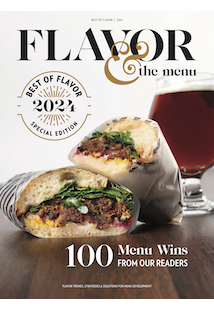Chefs have been exploring the true genius of compound butters for a while now, leveraging butter’s magical ability to enrich and lengthen flavor experience while carrying trending flavors flawlessly.
They are easy to pull together, require little skill or time, and provide an operator with a custom-created ingredient that can elevate anything from baked goods to meat-centric entrées, pastas and desserts. Today, the opportunity is around modernizing compound butters, adding intriguing, sometimes unexpected, ingredients.
Modern compound butters can be your next great back-of-house tool—not only versatile enough to work across all menu parts, but easy enough to create using cost-effective ingredients.
Operators can leverage the “housemade” macro trend to their advantage with little effort, and can showcase trending flavors, like gochujang, honey or guajillo.
Read more: 10 Applications for Flavored Butter











